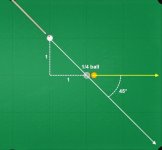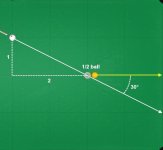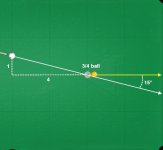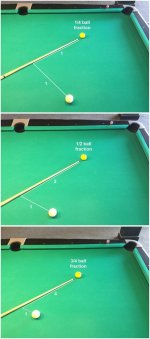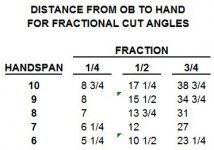(1 of 3)
There have been a few threads/posts about how to visualize fractional CB/OB alignments (Poolology comes to mind, for instance). This one is the most stripped-down version I know of.
It's based on the geometric principle that we can know the non-right angles of a right triangle by the "slope" of its hypotenuse (the ratio of the sides forming the right angle).
1-to-1 slope = 45-degree cut = 1/4 ball fraction
pj
chgo
View attachment 52041
There have been a few threads/posts about how to visualize fractional CB/OB alignments (Poolology comes to mind, for instance). This one is the most stripped-down version I know of.
It's based on the geometric principle that we can know the non-right angles of a right triangle by the "slope" of its hypotenuse (the ratio of the sides forming the right angle).
1-to-1 slope = 45-degree cut = 1/4 ball fraction
pj
chgo
View attachment 52041
Attachments
Last edited:
